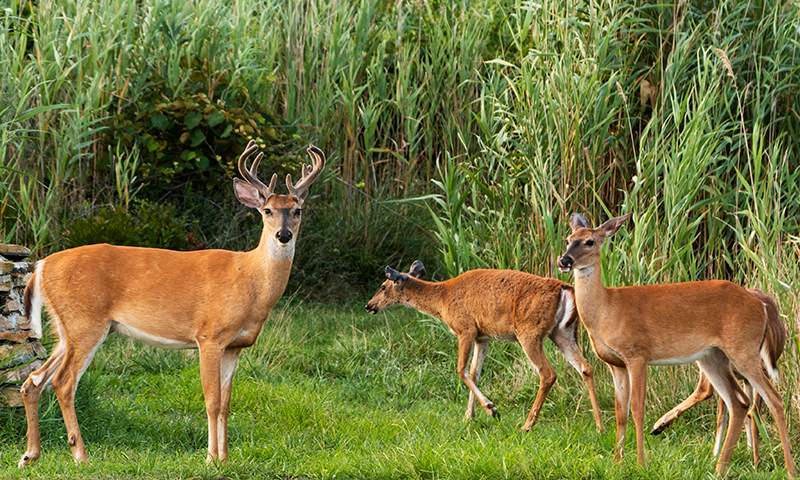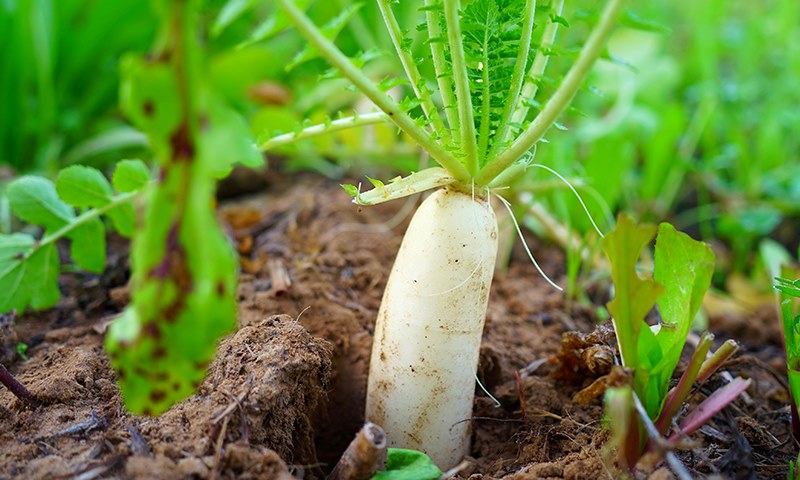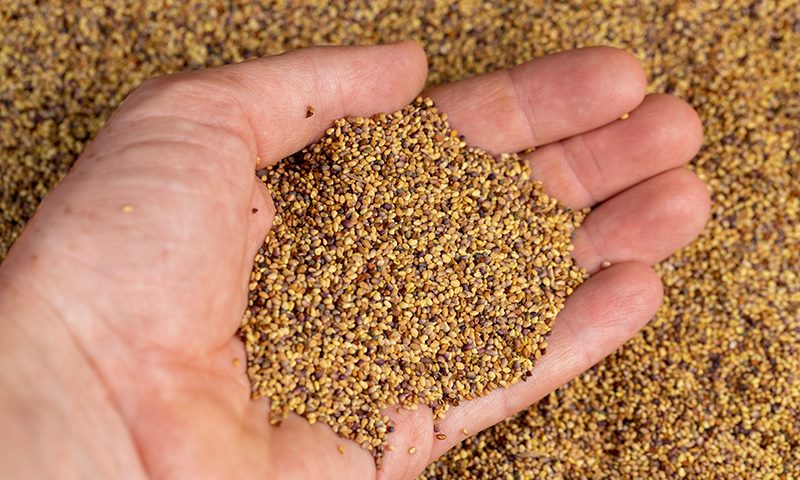Plant a Food Plot Without Equipment
Whether you're a wildlife enthusiast or a conservation-minded urban archer, planting a food plot for deer can have a significant impact on the health and vitality of local herds. Food plots boost biodiversity, enhance wildlife habitat and provide important nutrition for deer — from bucks and does to fawns. All it takes is a rake, quality seed mixes and a little sweat equity, and you can plant a food plot of your own.
- Choosing a Spot for a Food Plot
- Preparing Your Food Plot for Planting
- Choosing Top-Quality Food Plots Seeds
- Planting Your Food Plot by Hand

Sunny, open areas are perfect spots for food plots.
Choosing a Spot for a Food Plot
When starting a food plot without power equipment, focus on an open area. The less underbrush and other vegetation in the spot you choose, the less debris and weeds you'll need to clear before you plant. Ideally, your spot should get six to eight hours of direct sun each day.
Take time to watch your potential site at different times of the day. Pay attention as the sun moves across the sky and shadows move across soil to make sure the sun hours add up. Those sunny times help ensure hand-sown seed germinates quickly, develops strong roots and gets started well.
Soil moisture can also affect the success of your equipment-free planting. Moisture works in two ways: Moist areas that resist drought help support germination and provide the moisture your food plot seed needs to germinate and grow. But low-lying, poorly drained areas work against healthy plants. So avoid spots where water accumulates and sticks around for too long.

Clearing and loosening the soil gets it ready for seed.
Preparing Your Food Plot for Planting
Once you have your spot selected, you will want to prepare the soil to receive the seed. If you've ever used grass seed to plant a home lawn or overseeded your turf at home, you'll notice a lot of similarities in planting your food plot.
First, you need to clear away any leaves or other debris and expose the soil below. Any good, solid rake will do. You can use a regular leaf rake or go for a garden rake (sometimes called a bow rake). Then clear away anything that could stand between your food plot seed mix and the soil where it will grow.
Good seed-to-soil contact is essential for quick, solid establishment of new seeds. Once the debris is cleared, go one step further to loosen the soil slightly with your rake. This helps ensure when seed germinates, roots can easily penetrate the soil without interference. Then your new food plot is on its way to providing food that helps build healthy deer bodies, nutrient-rich milk for fawns and big racks on bucks.

Small, easy-to-plant brassica seeds provide nutrient-rich deer greens and roots.
Choosing Top-Quality Food Plots Seeds
With equipment-free food plot planting, seed mixes that showcase plants with small-sized seeds make it easy to get good seed-to-soil contact without going too deep. The seeds of deer favorites like clovers and brassicas are perfectly sized for hand sowing.
But seed size isn't the only consideration. When planting a food plot, use quality seed from a company you trust to deliver the performance you expect from your food plot seed.
True to Pennington's roots as one of the pioneers in the food plot business, Pennington food plot seed mixes offer several options ideal for hand seeding. Pennington RACKMASTER Deer Greens Food Plot Seed is a 100% brassica mixture that includes kale, rape, purple top turnip and Trophy radish and provides a high-protein, energy-rich diet of greens and roots through winter months.
Easy to plant and quick to emerge, RACKMASTER Clover Trio Food Plot Seed blends annual clover varieties for up to 10 months of extended forage from colder periods following the rut through spring into summer and fall.
Durana clover, a favorite for erosion control, is a deer favorite, too. RACKMASTER Durana White Clover Food Plot Seed provides a high-quality, stand-alone food plot that outcompetes weeds, tolerates shade from surrounding grasses, withstands heavy grazing and produces its own fertilizer, too.

Small seeds, like clover, are easy to spread by hand.
Planting Your Food Plot by Hand
With the soil prepared and quality seed in hand, planting your food plot without equipment is as simple as it sounds. You can spread the seed by hand or use a hand-held spreader — the choice is entirely yours.
Read your food plot seed mix label for extra tips on the recommended rates for your seed mix, best planting times in your area and recommended planting depth. Most small seeds are planted just 1/8-inch or 1/4-inch deep — deep enough to make good soil contact but shallow enough to get lots of full sun.
Just like when you're repairing bare lawn spots or thickening a thin lawn, make sure you apply the seed uniformly and evenly, according to the label instructions. Don't be tempted to sow heavier amounts or plant seed deeper — you'll set your food plot back instead of forward.
Once the seed is spread, take a moment to rake the area again. If you're using a bow rake, turn it over so the flat, top side of the rake head is down. Then let it smooth the soil and new seed. This helps make sure your food plot seed mix gets down in the soil where it needs to be.
Whatever your goals for your food plot, we're here to help you succeed. For four decades, hunters and landowners have relied on our food plot mixes to enhance wildlife habitat, support conservation and enhance deer herd health. Have a question? Send it our way. We're Pennington. We're here to help.



